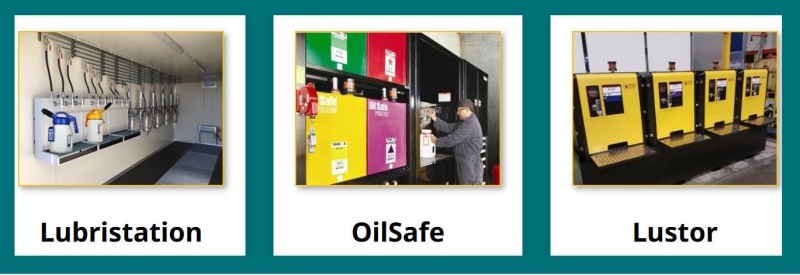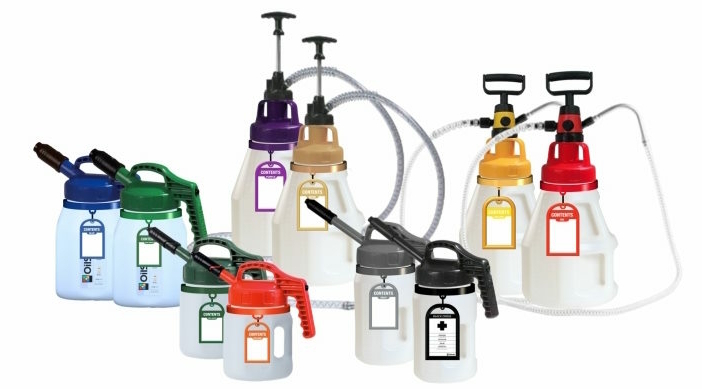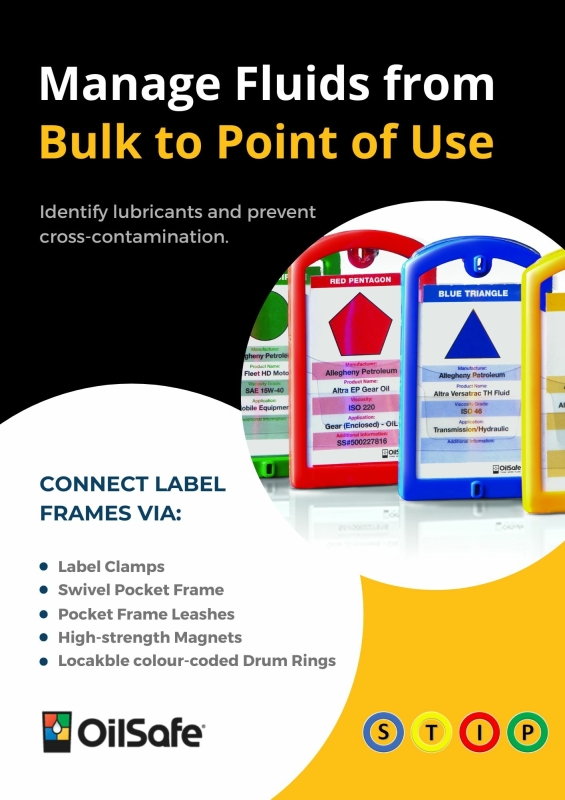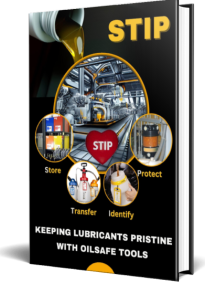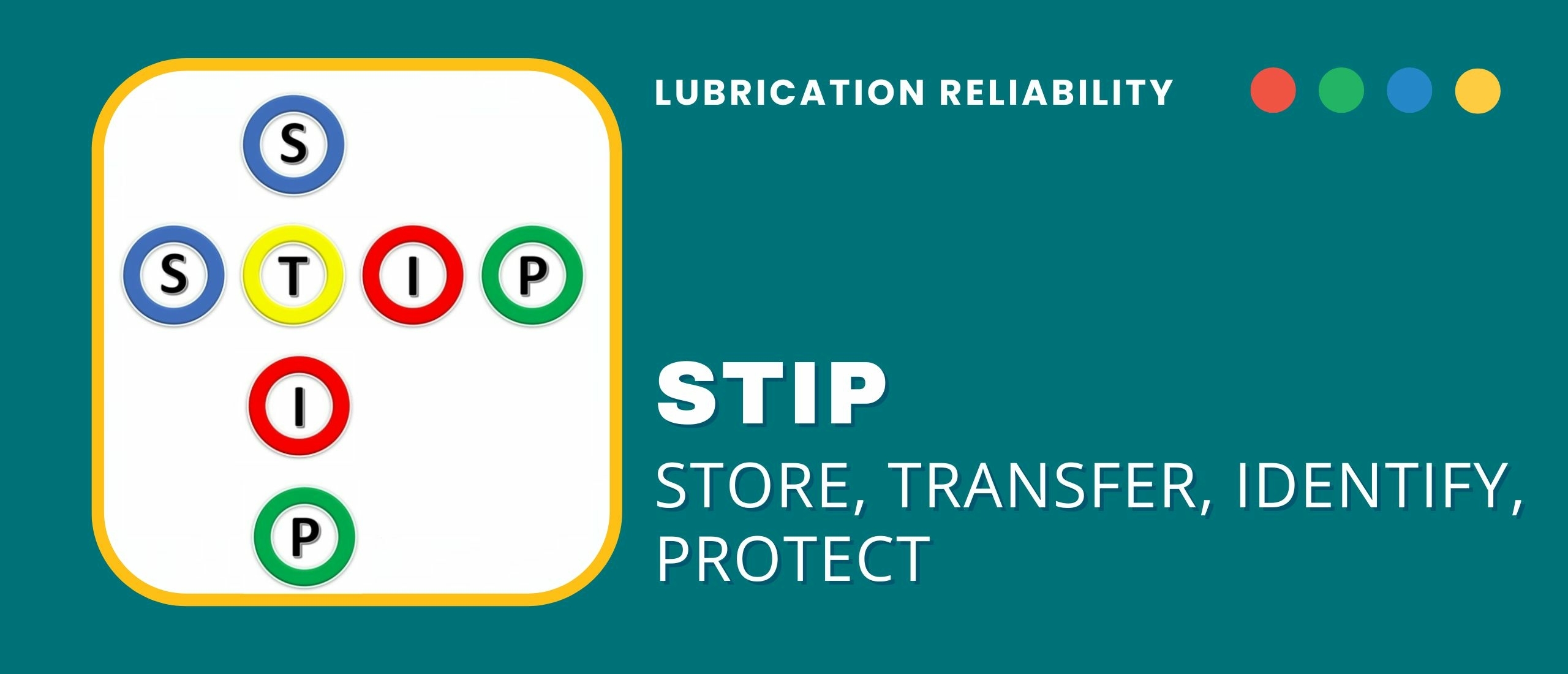
STIP in Lubrication Management: Store, Transfer, Identify, Protect
STIP is a foundational concept in lubrication reliability . It stands for Store, Transfer, Identify, Protect. By properly storing lubricants, transferring them cleanly, clearly identifying them, and protecting them from contamination, you drastically reduce failures and extend equipment life. A robust STIP programme yields cleaner oil, fewer breakdowns, and lower maintenance costs.
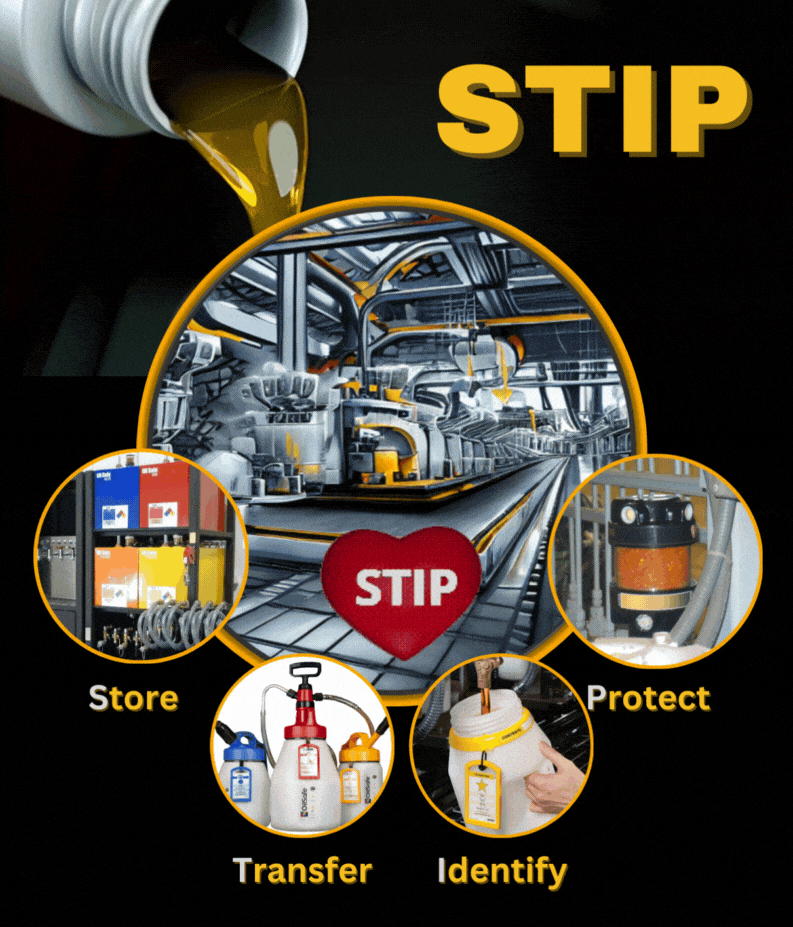
Introduction
Lubricants are the unsung heroes of industrial machinery—silent but critical to performance and longevity. Yet all too often, they arrive or are handled improperly, exposing them to contamination, misapplication, and degradation before they ever reach the machine.
Enter STIP - a structured, four-pillar framework that guides how lubricants should be stored, transferred, identified, and protected. When done well, STIP prevents common lubrication failures, supports cleaner oil, and improves overall equipment reliability. In this article, we will explore each pillar in depth, offer examples and best practices, and show you how to build a world-class lubricant handling programme.
The Four Pillars of STIP
1. Store
Proper storage is the foundation. Lubricants stored poorly are vulnerable to water ingress, dust, temperature extremes, and container damage. All of those degrade performance over time.
Best practices for storage include:
- Use a dedicated lube room or enclosed area, separate from workshops or open areas.
- Maintain clean, dry, and temperature-controlled conditions (avoid large temperature swings or humidity.
- Keep containers sealed, upright, and off the ground (on pallets or racks).
- Use sealed drums or containers rather than open buckets or cans.
- Filter new lubricants before placing them into storage to remove ingress contaminants. (This is often recommended in lubricant handling guides ).
- Use a first in first out ( FIFO ) policy so older stock is used first, avoiding extended shelf life beyond safe limits.
By doing these, you reduce the risk that oil is damaged before it ever enters your machines.
2. Transfer
Once stored, lubricants must be moved to the point of use. This step is a major contamination opportunity if done carelessly.
Key guidelines for transfer:
- Always use sealed, dedicated containers and avoid open funnels or unprotected vessels.
- Employ clean, filtered hoses or transfer lines with quick-connect couplings to maintain fluid cleanliness. As one best practice states: “only move lubrication in sealed containers; transfer oil into equipment through hoses with quick disconnect couplers using filter carts.”
- Use colour-coded containers or lids so each lubricant is visually distinct.
- Avoid cross-contamination by never using the same pump or container for different lubricants unless thoroughly flushed and cleaned.
- Monitor transfer pressure and flow to minimise turbulence or air entrainment.
- Use filtration during transfer when possible (e.g. filter cart inline) to catch particulates.
- Keep transfer lines short and protected from external damage or contamination.
Good transfer practice ensures that the oil that reaches your machine is as clean as it left storage.
3. Identify
Misapplication - putting the wrong lubricant in the wrong part of the machine - is one of the easiest mistakes but one of the most damaging. Clear, consistent identification is the safeguard.
Steps to do this well:
- Label every container, drum, or tank with product name, viscosity, supplier, batch, and date.
- Use colour-coding, symbols, or tags to make recognition immediate.
- Label fill ports on machines to show exactly which lubricant to use.
- Maintain a lubrication chart or matrix in the maintenance area so technicians can cross-check.
- Use label holders or frames that resist removal or wear.
- Ensure consistent labelling from bulk storage to the point of use.
- Periodically audit and remove obsolete or duplicate labels.
By enforcing identification, you prevent cross-contamination and mistakes, which are common causes of lubricant and equipment failure.
4. Protect
Even with good storage, transfer, and identification, lubricants are still vulnerable until they reach the machine. Protecting them from external contamination is critical.
Protection measures include:
- Use desiccant breathers or filtering breathers on containers, reservoirs, or tanks to filter incoming air and block dust and moisture.
- Use check-valve breathers (isolation breathers) that allow venting but prevent backflow or ingress under negative pressure.
- Keep fill points, lids, and access ports closed when not in use.
- Use seals, gaskets, and barriers that exclude contaminants.
- Regularly inspect and maintain filters, seals, and breathers.
- Where possible, encapsulate hoses and lines to prevent external contamination.
- Monitor the state (colour, saturation) of breathers and replace when exhausted or clogged.
Protecting lubricants ensures their integrity until they do their work inside the machine.
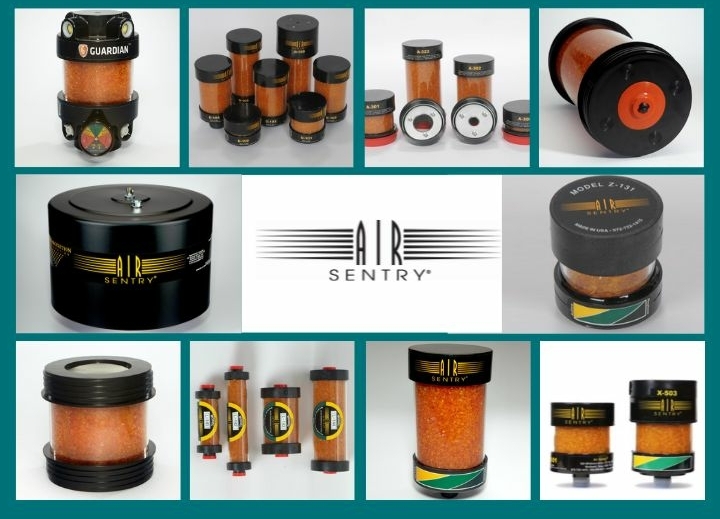
Why STIP matters
Implementing STIP is not just good housekeeping — it has measurable impact:
- Reduced lubricant contamination leads to fewer particle-induced wear failures.
- Fewer misapplications reduce breakdowns and warranty issues.
- Extended oil life and reduced waste.
- Lower maintenance costs, lower spare part consumption.
- Better reliability and uptime - the machine runs longer without unscheduled shutdowns.
- Improved safety and compliance, since cleaner operations are safer and less prone to leaks or disasters.
As Lubretec points out, many bearing failures stem from contamination, making STIP a frontline defence in reliability programmes.
Also, industry sources emphasise that storage, handling, and filtering practices are critical to maintaining lubricant quality from bulk to point of application.
Finally, brands such as OilSafe embody the STIP philosophy with visual lubrication systems, colour coding, and tools that support all four pillars.
Example: Applying STIP in a Factory Scenario
Imagine a manufacturing plant with multiple machines requiring different gear oils, hydraulic oils, and greases. Here’s how they might roll out STIP:
- Store: They build a dedicated lube room. They place drums of gear and hydraulic oils on pallets, inside sealed cabinets. A temperature sensor logs conditions.
- Transfer: They deploy colour-coded OilSafe containers and lids. Transfer lines have inline 3-micron filters and quick-connect couplers.
- Identify: Each drum has a clear label, batch number, viscosity , and expiry date. Machine fill ports are labelled accordingly on each machine.
- Protect: Each reservoir has a desiccant breather; each container uses check-valve breathers. Operators replace breathers on schedule.
Over time, the plant sees a drop in unplanned pump and bearing failures. Their oil analysis results show fewer particles. Maintenance costs decline.
Tips for getting started
- Start small: begin with a critical machine or system and pilot STIP there.
- Train technicians and the maintenance team; STIP is only as strong as its daily execution.
- Use visual tools (colour coding, charts, labels) to make adherence intuitive.
- Audit regularly and adjust.
- Integrate STIP with your lubrication programme, condition monitoring, and reliability strategy.
- Choose quality equipment (breathers, containers, filters) that aligns with STIP principles.

